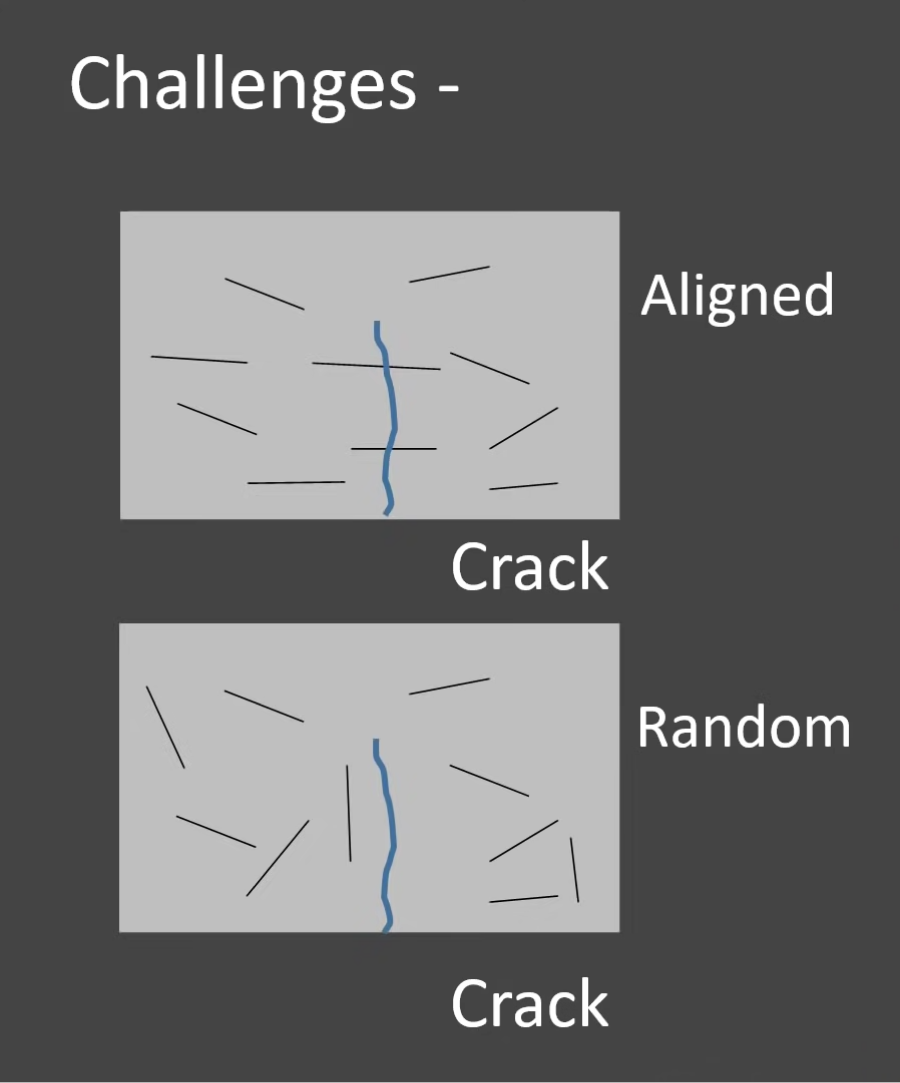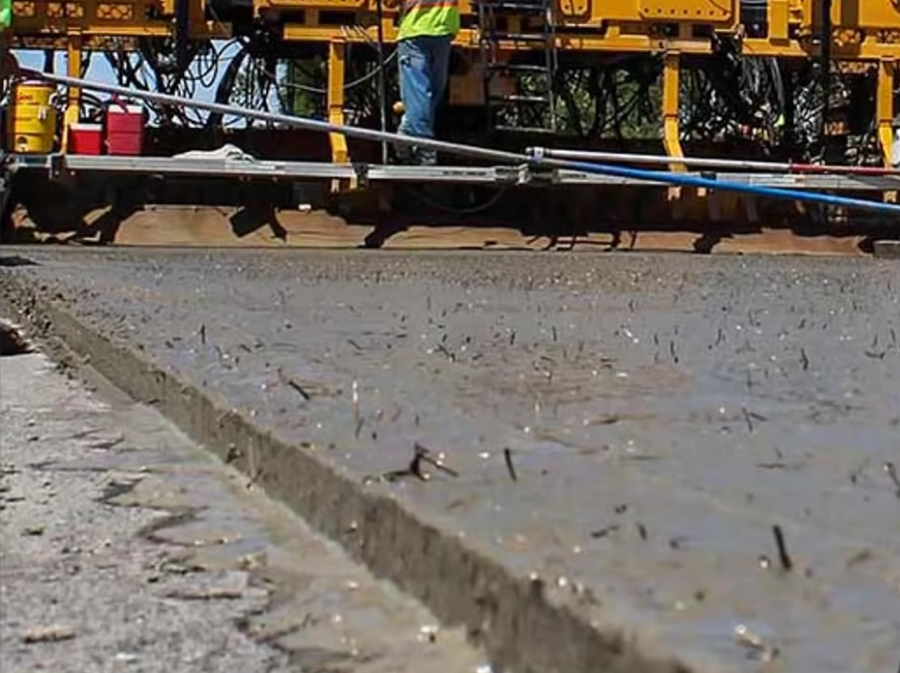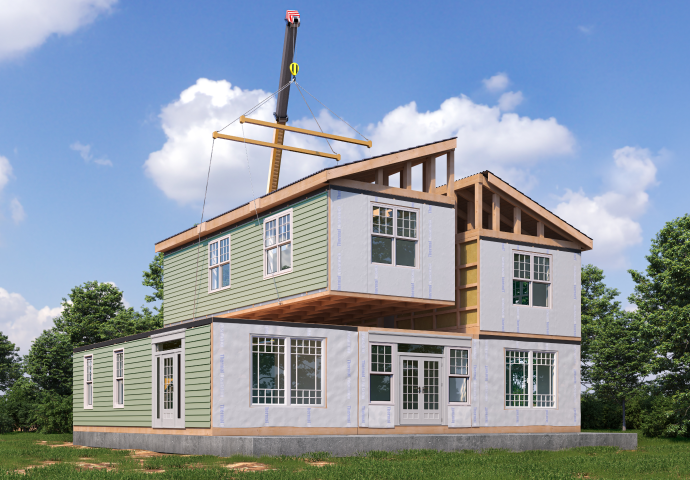Intro
If the tension of concrete is large enough we get cracks. Becauase concrete is weak in tension, we have an option to put the reinforcement inside of the concrete. We can reinforce concrete with rebars. However, in rare cases when steel bars cannot be used or when the structure needs to be made thin, what should be done? How about we put fibers into it rather than put rebars?
*This content is based on Tyler Ley's youtube video "What is fiber-reinforced concrete?"
To tell the truth, it doesn't make the concrete stronger but it makes it hold together longer like the picture below: it makes it really really hard to pull apart and we call this toughness it will still form at the same load but the fibers keep the crack small.

Micro versus Macro Fibers
There are two types of fibers. Micro-fibers are mixed to protect fresh concrete and should be used within 6 hours after mixing. They prevent crack formation of fresh concrete. Macro-fibers are intended to carry load and, therefore, used to replace traditional reinforcement in certain non-structural applications as well as minimize and/or eliminate both early and late age cracking.
|
Micro fiber |
Macro fiber |
|
|---|---|---|
|
Advantage |
reduces plastic shrinkage cracking |
minimizes both early and late age cracking |
|
Size |
<1/2 inches (12.5mm) |
>1/2 inches (12.5mm) |
|
Material |
flexible |
stiff |
Benefits of Fiber Reinforced Concrete:
1. Some reinforcing everywhere
2. Strength after cracking
3. Reduces damage in a fire
Challenges of Fiber Reinforced Concrete:
1. The fibers in concrete are randomly oriented, making control difficult.
Some may help me and some may not so fibers are kind of random. They are hard to predict what they're gonna do for you and this is why it's tough for some engineers to use fibers.
 The fibers in concrete are randomly oriented, making control difficult.
The fibers in concrete are randomly oriented, making control difficult.
2. Must adjust mixture design and finishing practices
 Fibers sometimes stick up out of the surface
Fibers sometimes stick up out of the surface
3. Fibers increase concrete cost by 10% to 15%
Conclusion
So far, we have explored methods of reinforcing concrete with fibers. There is also a method of reinforcement using rebar. (related post : Secrets of Reinforcement | How to design reinforced concrete)
Then, which method is better for reinforcing concrete?
It's recommended to use both. Reinforce with rebar for major loads and use fiber reinforcement to minimize cracks.
Reference
This content is based on Tyler Ley's video "What is fiber-reinforced concrete?" If you want to learn about the appropriate amount of fiber reinforcement and how fibers reduce damage in fire, please click the link to explore Tyler Ley's content.
Link : What is fiber reinforced concrete?
/Tyler%20ley%20240_240.png)
I have more than 20 years of experience in the fields of structural and concrete materials engineering. During this time I have worked as an engineer with a design consultant, construction contractor, government agency, and as a professor. This practical experience has made me a better teacher and researcher.
I am very active in the American Concrete Institute where I am a voting member of the Concrete Durability, Material Science, Concrete Proportioning, and Sustainability Technical committees. In addition, I serve on the executive committee of the National Concrete Consortium, a group made up of DOT engineers from 35 different states. I also served as the president of the American Ceramics Society Cements Division in 2016. I have a passion for creating innovative learning content.
My websites are visited by over 50,000 people per year, visit my website and youtube. (👈click)
👉Learn More About the MOTIVATOR (click)
※ If you click on the keywords below "Topics," you can view related contents.







/%EC%9E%91%EC%9D%80%EC%97%B0%EB%AA%BB_400_400.png)

